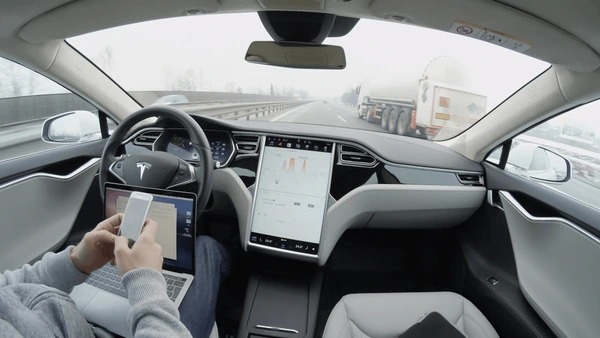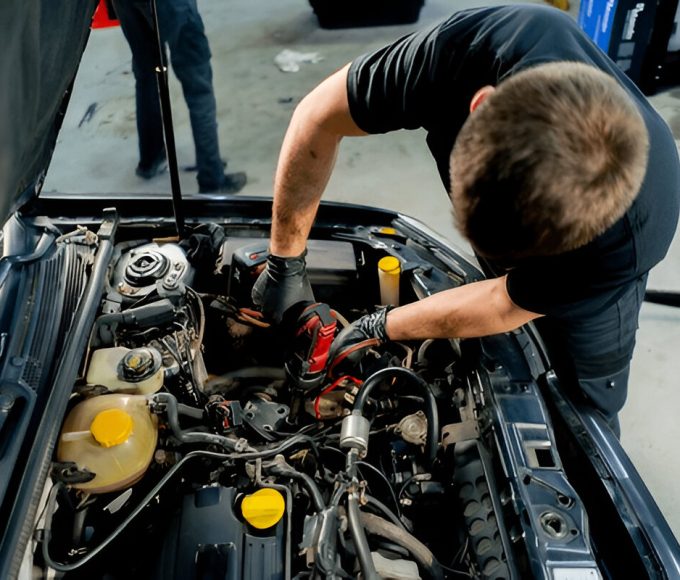Worldwide, the transportation sector is bracing for a revolution with the arrival of self-driving automobiles, also known as autonomous vehicles. The continued massive spending on R&D by both digital behemoths and more conventional manufacturers makes autonomous vehicles a reality, not just a pipe dream. Enhanced mobility, reduced traffic accidents, and revolutionized corporate logistics are the goals of these high-tech vehicles. Development is proceeding rapidly, even though many questions about regulatory frameworks and broad adoption remain unsolved.
Autonomous vehicles might improve people’s lives and completely alter several industries by leveraging front-line sensor technology, artificial intelligence, and data processing. Learn more about the latest trends, real-world applications, and anticipated benefits of these next-gen vehicles in this blog post.
Prospects for Autonomous Vehicles in the Future
The advent of fully autonomous vehicles heralds a sea change in global transportation. Although completely autonomous vehicles are still in the early stages of research, experts predict that sales will skyrocket in the next decade. The worldwide market for autonomous vehicles is expected to reach USD 615 billion by 2030 because of improvements in safety, more accessibility, and developments in artificial intelligence.
Additionally, advancements in communication, machine learning, and sensor technologies have contributed to acceleration. These innovations enable autonomous cars to evaluate complex road circumstances with remarkable precision.
They do this by:
Using Lidar and High-Definition Cameras:
These devices detect bikes, pedestrians, and other vehicles from various angles and distances.
Benefit from Real-Time Data Extraction:
- The onboard computers are always changing the path in response to changes in traffic conditions and potential dangers, making split-second judgments.
- Thanks to self-driving cars, which can safely traverse extremely crowded streets, there are now much more viable transit alternatives in dense metropolitan areas.
If you want broad adoption, you need more than technological advancement. Permissible levels of regulation, public oversight, and accountability remain significant challenges. Legislators worldwide must pass laws protecting autonomous cars without sacrificing the public good. Because of this, people have been discussing insurance policies and the associated ethical issues.
Professional Guidance: Keep yourself updated on changes to domestic and foreign rules regarding self-driving cars before investing in or using this technology. Companies and consumers may now confidently navigate new rules armed with this information.
The Present State of Self-Driving Cars in the Real World
A world without driverless cars is yet in the distant future, but there are already some remarkable examples of this technology in action:
- On highways, the Tesla Model S’s autonomous driving system can do lane changes, braking applications, and turns. It showcases the possibility of AI-driven driving assistance, while it currently lacks full autonomy.
- Waymo One is an autonomous car ride-hailing service available in several U.S. locations. Waymo is an Alphabet subsidiary. Passengers in some regions can travel without a driver.
- Cruise, made by General Motors, is experimenting with a trial program that will offer limited transportation services in several locations. The company can continuously enhance its autonomous technology because of its extensive testing process.
- Collaborations between Lyft and Uber: Major ridesharing firms have collaborated with leading tech firms to develop and test autonomous vehicles.
Everything we’ve seen so far is only the iceberg’s top. Researchers and engineers are constantly mapping urban highways, testing autonomous features in controlled circumstances, and amassing vast driving datasets in their never-ending effort to improve their systems. Autonomous vehicles are so improving in reliability and safety.
The Benefits of Self-Driving Vehicles
Even though autonomous vehicles are still in their infancy, several industries are looking forward to the advantages they will provide. The advantages are not limited to short-term gains; they benefit people, businesses, and society in the long run.
Strengthened Safety
- Greater Accuracy: Autonomous cars might drastically lower accident rates by taking over critical driving tasks.
- Reliability: Autonomous systems prevent humans from taking their hands off the wheel or sending a text message since they are constantly vigilant. Consequently, keeping performance consistent improves road safety.
Increased accessibility
- People’s Mobility for Everyone: People who aren’t good drivers, have physical limitations, or are old may find a new feeling of independence with driverless cars. This level of accessibility may alter the way individuals navigate urban areas.
- Improvements to the Public Transportation System: Autonomous shuttles streamline connections to larger transportation networks and may run on predetermined routes at all hours.
Ridesharing businesses can run fleets constantly without regular human expenditures, while autonomous freight vehicles might improve delivery efficiency. Another perk of the age of self-driving cars is that office workers may relax or multitask on their laptops instead of hating traffic.
Key Ideas
- AI is always improving: we can make real-time decisions thanks to sophisticated algorithms and machine learning.
- State-of-the-Art Sensors: State-of-the-art devices, HD cameras, radar, and LIDAR provide accurate obstacle identification.
- Improved Data Processing: Power onboard computers may assess road conditions swiftly and correctly.
Main Advantages
- Minimized Incidents: Accidents may be dramatically reduced by eliminating human error. – Smart navigation systems can regulate traffic flow and optimize routes, reducing traffic congestion.
- Enhancements to Accessibility: People with mobility issues enjoy greater independence and comfort.
Moving Forward: Embrace What Lies Ahead
Autonomous vehicles’ long-term viability depends on cautious regulation, public confidence, and ongoing innovation. Nonetheless, hope is high, and the future appears promising. Potentially changing our perspective on transportation, autonomous technology has the potential to reduce traffic accidents while allowing us to travel in elegance. Autonomous vehicles are entering a new age that will benefit everyone greatly; therefore, let’s welcome the future with open arms.

















Leave a comment